Reporter: There are 17 smart specialization parks in the North-West region. What are they, how do they work in reality and how many of the 17 parks are functional or have an administrator at the moment?
Marcel Boloş: Smart specialization parks are a novelty in everything that means parks that manage SMEs together. Smart specialization parks were introduced by Emergency Ordinance 112 of 2022 and are activities specific to SMEs that included an innovation component and/or, as the case may be, a research component. So, in smart specialization parks, we have production activities and innovation or research activities, as the case may be. There are indeed 17 smart specialization parks that are distributed across five counties. In Bihor county, there are seven smart specialization parks, in Maramureş county, five smart specialization parks. In Bistriţa Năsăud county, we have two smart specialization parks, in Sălaj county, two parks, and in Satu Mare county, one smart specialization park. The main advantage of these structures is that they have pre-allocated budgets for SMEs to access grants. So they are smart specialization parks with pre-allocated budgets. So, companies that submit funding applications and SMEs that access funding within such a park have the grant at the level of the allocated smart specialization park and do not have to compete with all the other SMEs when the project calls are opened. This is an essential feature: all these budgets that are pre-allocated to SMEs are pre-reserved budgets and all the documentation submission and competition between SMEs is carried out within the smart specialization park.
Reporter: What is the pre-allocated funding for the 17 smart specialization parks?
Marcel Boloş: We had allocated 170 million euros for the North-West region, of which 45 million euros were for the construction of public utility infrastructure related to the 17 smart specialization parks. That is, we gave money to local public authorities to introduce electricity, water and sewage networks, as well as for the construction of access roads and the park's connectivity road. So these smart specialization parks have ensured public utilities. Moreover, we allocated the grant for each smart specialization park, the total value rising to 125 million euros. The maximum value of the grant that can be accessed by an SME can reach up to 2.5 million euros. And what is very important to remember is that the call for projects has been extended for SMEs until December 31, 2026.
Reporter: How many applications do you have so far for these parks?
Marcel Boloş: The application procedure is as follows: each local public authority, each city hall, which has submitted the project to us, based on the concluded financing contract organizes the concession of the land that is intended for the productive activity of the SME and based on the concession contract, then submits the application for obtaining the grant to the Regional Development Agency. As I said, the call was opened and will remain open until December 31, 2026.
• 2.5 million euros - the maximum grant that a company can receive in the smart specialization park
Reporter: From what you are telling us, we note that we are practically now in the second stage of this program - financing SMEs in the process of increasing economic competitiveness. Was the first part carried out for all 17 parks, that is, financing the founders and administrators?
Marcel Boloş: Yes. At the moment we are in the second stage, dedicated to SMEs, for which we have allocated 125 million euros in grants. In the 17 smart specialization parks there are 196 plots that can be occupied by concession, and the maximum value of a grant is 2.5 million euros and we aim with priority that the respective places are occupied by SMEs with production activities. We are talking about parks that have accessibility and opportunity to access money for SMEs, with the mention that the funding requests must include an innovation component. Even if, for example, it is a new product that the company obtains; and this is considered a product innovation. Entrepreneurs should not be scared by the innovation component that we are requesting, because we are talking about the broad sense of the notion of innovation, in which a new product, which did not exist in the technological manufacturing line of an SME, is considered, as we specify, a product innovation. Now, our goal is to attract an investment volume of over 500 million euros in these smart specialization parks with the grant component that I mentioned, namely the 125 million euros, and to create jobs. Our target is somewhere over 2000 jobs that we are considering in the respective parks. We also have a map with the locations of the smart specialization parks that can be made available. We have also created a special platform to obtain information related to what smart specialization parks mean. The platform is called INNO (ed. - inno.ro), from innovation, but this platform mainly aims to attract investors and create these SME conglomerates that can then support economic development at the local level.
Reporter: How did you arrive at this type of program? Is it still found in the European Union?
Marcel Boloş: I got this idea from the lessons learned up to this programming period, because I noticed that the allocations of funds that we have made over time for SMEs had a dispersion effect, meaning that somehow we allocated funds and concluded financing contracts with SMEs, but the immediate result for supporting local communities was not seen. A second consideration that was the basis of this program is that of creating these SME conglomerates, which together give a synergistic effect, meaning that it involves the local public authority, which together with the SMEs ultimately form an ecosystem. The third condition, which actually answers your question, is that we resorted to these parks because the first specific objective in the Regional Operational Programme is dedicated to smart specialisation. This specialisation is based on either innovation or research activity. All these considerations or conditions together led to the idea of creating smart specialisation parks which are a first at the European Union level. In creating them, we relied heavily on the fact that SMEs gathered in the same place in an ecosystem can ensure a considerable multiplier effect for local authorities and are ultimately the future, including for the next programming period when these types of parks, whether they are smart specialisation or simple industrial parks, will have the same effect of attracting investors and creating jobs. In addition, innovation and research activity lead to the production of products with high added value, which allows for future qualifications for the workforce and a better remuneration system for those working in these smart specialisation parks. Our objective in this second stage is to operationalize and popularize the smart specialization parks and achieve these expected results in terms of investment value and job creation. In addition, we must also think about the additional revenue component that they bring to local authorities and with it the financial autonomy they need.
• Concession of land in the parks, carried out by the local public administration
Reporter: Are the criteria that SMEs must meet to access these smart specialization parks established by the administrator of the respective park or by the administrative-territorial unit? That is, each administrative-territorial unit on the territory of which the respective park operates establishes its own access criteria for certain companies in the areas where they consider them necessary or can be developed in the respective area or are they general criteria?
Marcel Boloş: The criteria are divided into two categories: land concession criteria and selection criteria for financing. Establishing the criteria for land concession is the exclusive decision of the local public authorities and our call was to take into account the specialization of the workforce in the area of the administrative-territorial unit and to take into account the types of activities. Therefore, we urged the local public authorities to impose criteria especially for what the production part means, so that afterwards, once the concession procedure is completed, the SME has the concession contract for a certain type of activity. As I was saying, the production activity is the one that is compatible with the activity of the smart specialization parks. After which, the second stage is the one regarding the selection criteria for financing. At this stage, the selection criteria are established by the regional program management authority and mainly refer to the financial sustainability of the business, the market share on which it is to operate. So there are specific criteria in which the type of activity for which the concession contract was concluded is important, a contract that is followed by the financing contract. As SMEs have access to these types of information, we think that smart specialization parks are usually located next to administrative-territorial units, especially urban localities, I know, I give you for example Salonta, Marghita, Tăşnad, Baia Sprie, all this information that has come into the possession of SMEs can pave the way for business development and for the implementation of investments in smart specialization parks.
• Financial instruments - the future of SME financing
Reporter: Since you talked about the fact that these smart specialization parks have a grant component of 125 million euros for SMEs, I have an adjacent question. During your terms as Minister of European Funds, you were a supporter of the idea of financing SMEs through financial instruments. Do you believe that these financial instruments should continue to constitute the basis of SME financing or are grants also needed?
Marcel Boloş: As for the financial instruments component, they represent the future of what the post-2027 programming period means. They are financial instruments that combine a grant component with private-equity investments, that is, those investments that concern the capital of a company. For example, this type of financial instrument that combines the grant with the private-equity investment can be a form of support for SMEs, but of course we are talking about a grant component that is substantially modified compared to what we have so far as grant values granted, leaving room for the financial instruments component. There are also portfolio guarantees that take the form of financial instruments that have been and are being implemented through the National Recovery and Resilience Plan. There are also financial instruments that can be designed by banks and that can have a grant component. Everything will depend on the financiers, on how they will think about the grant component and the financial instrument component. In the end, the improvement of the financing system for what it means to provide grants together with loans can be a good tool for SMEs, but it is clear that the current orientation of the European Union for the post-2027 programming period is the one regarding financial instruments.
• 290 million euros, the total absorption target for 2025 at the North-West ADR
Reporter: Regarding the other activities within the North-West ADR, do you have a situation of European funding at the end of the first 10 months of this year? What amounts have been paid or absorbed so far?
Marcel Boloş: So far, we have settled 204 million euros from the European Commission. In addition, we have a pre-financing that we have received in the amount of 47 million euros. In total, we have absorbed around 250 million euros so far and our intention is certainly to have an absorption target of another 40 million euros for November and December. I hope we can close the year with this absorption target, which is an important step for the North-West Regional Development Agency. We are managing 1904 projects that are currently being submitted by beneficiaries, with a total value of 6.2 billion euros, and of course all these steps taken this year and in previous years have had in mind a priority objective for the agency: avoiding the risk of decommitment, which means losing European money. We are not in a situation where we have a risk of decommitment and I hope we can had a financially closed year 2025, which would also involve European funds absorbed in advance.
Reporter: What is the situation of the SME digitalization program in the North-West RDA, because at the national level there were problems regarding the financing of projects submitted by companies?
Marcel Boloş: We, for the SME digitalization part, are somehow on schedule with what it means to evaluate and implement projects. We had difficulties with what it means to interpret the applicant's guide, but these were somehow resolved either through administrative means or through the courts, but we do not have delays that would complicate these SME digitalization processes and which are quite important for what our objective is to create facilities for the digitalization of companies in the north-west region.
Reporter: On the Regional Operational Program 2021-2027, how many project calls do you have open for financing SMEs at the moment? What is the total allocation and what is the value of the submitted applications?
Marcel Boloş: The calls currently open for SMEs are those concerning smart specialization parks and for which we have allocated 125 million euros for the second phase, that is, for the financing of the respective businesses. Of course, this is an ongoing call and we are waiting for the submission of funding applications by those interested by the deadline of December 31, 2026. All other project calls dedicated to SMEs are currently closed. There are calls in which there were requests that exceeded three to four times the initial budget allocation, and here we are talking about calls according to the classic model that we have had over time, in which the grant component was predominant. Of course, we also had calls for projects that targeted investments in robotics and nanotechnologies, where financial resources were quickly consumed after the calls were opened, because we are the region that had and has this opportunity to access funds for what regional development meant. But, at the moment, the calls for projects for grants related to smart specialization parks are active.
Reporter: How many SMEs do you estimate will access the funding call for a place in the 17 smart specialization parks?
Marcel Boloş: We hope to attract good investors and ultimately have 196 SMEs, for the 196 plots in the 17 smart specialization parks. The estimated value of the investments that these SMEs will make amounts to over 500 million euros, which means that, in addition to our grant, each SME comes with the co-financing part. The state aid scheme only allows a certain intensity of the grant to be awarded.
Reporter: I understand from what you are telling me that the value of the grant awarded amounts to somewhere around 30-40% of the total investment value.
Marcel Boloş: Yes. This is the ratio between the value of the grant and the value of the investments. But it is a grant component that was thought up by the park administrators - each of the 17 parks has an administrator -, whose contact details are displayed on the INNO platform website. Moreover, on the platform, each applicant can view the occupancy rate of the plots in the 17 smart specialization parks, as well as information regarding the park administrators and contact persons so that business people can benefit from all the details regarding the conclusion of the concession contract and the financing contract.
Reporter: Thank you.







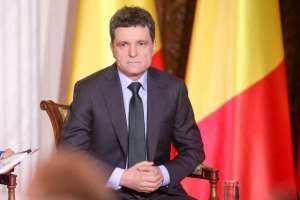





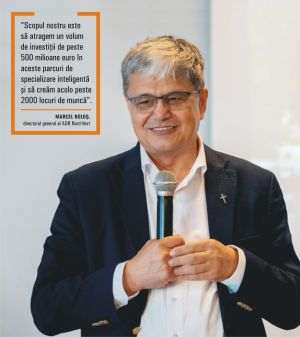





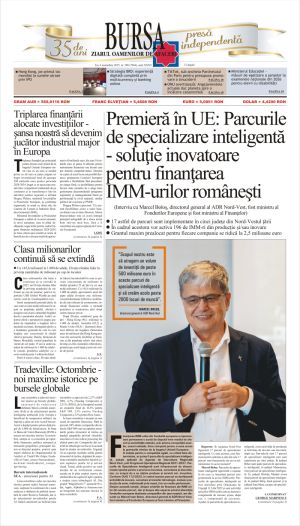


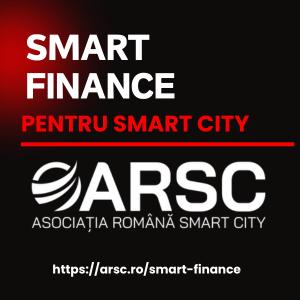









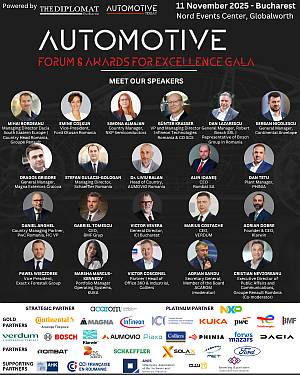

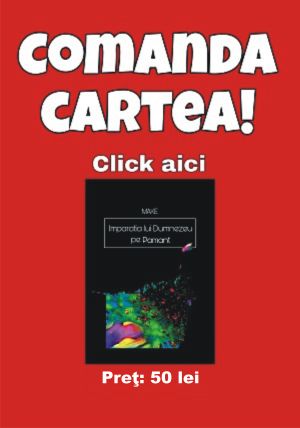




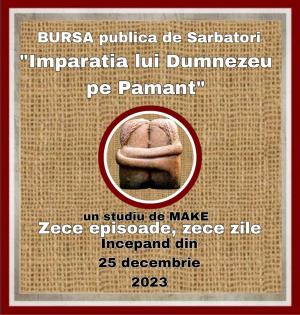

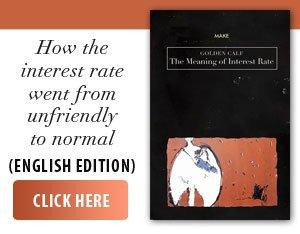




Reader's Opinion